20 PlayStation One Games That Were Way Ahead of Their Time
The Sony PlayStation changed gaming forever, but not all of that console's most innovative games were fully appreciated in their time.
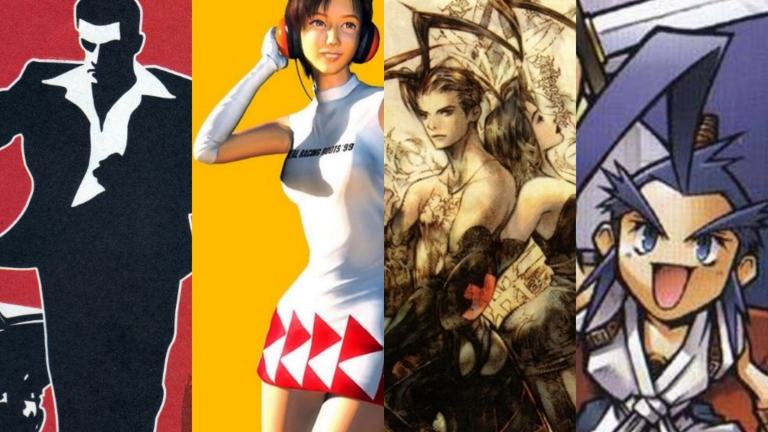
I know that this is going to sound strange, but I sometimes feel like the Sony PlayStation doesn’t get enough love. Yes, it was an incredibly successful console, but it was also a console designed and supported by a lot of people who were trying to figure things out as they went along. That approach led to a lot of big swings and big misses, but it also resulted in a shocking number of games that were truly ahead of their time.
Actually, the PS1 may just be the ‘90s console that ended up having the biggest impact on the future of the industry. While its status as such is a testament to its technological innovations and library of great games, it also speaks to the many PS1 games that somehow feel more relevant now than they ever have before.
Before we talk about those games, though, here are a few rules/selection criteria to keep in mind:
- The phrase “ahead of its time” is obviously somewhat subjective. For the most part, though, I tried to focus on games that featured some kind of technological or mechanical innovation that wouldn’t become standard (or appreciated) until after that game’s release.
- While this list includes some games that were successful in their day, I excluded obvious examples of innovative games that were widely appreciated upon their release. That is why games like Tomb Raider, Metal Gear Solid, and Gran Turismo are not on this list.
- Any game released for the PlayStation was considered eligible for this list. However, preferential treatment went to games that were released exclusively or initially for the PS1.
With that out of the way, here are 20 PS1 games that were way ahead of their time.
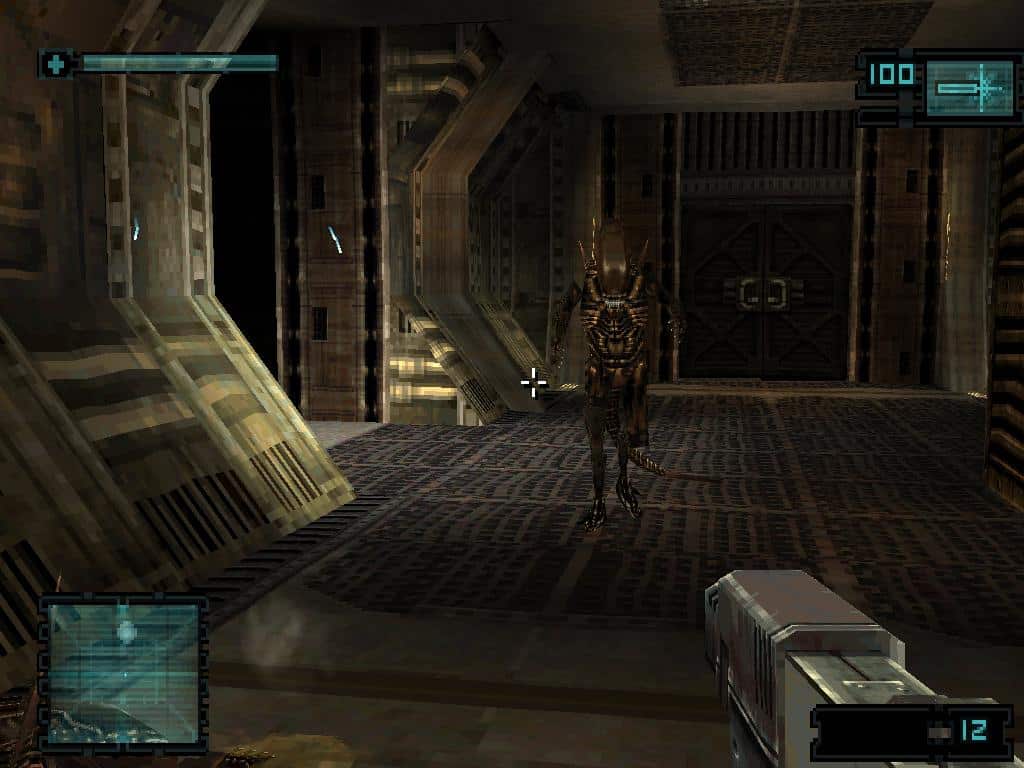
20. Alien Resurrection
Released near the end of the PS1’s life cycle (2000), Alien Resurrection survived a trip through development hell only to be met by mediocre reviews. While most of the game is honestly pretty forgettable, Resurrection deserves all the credit in the world for its early use of the dual-analog stick control scheme that is now standard for console FPS games everywhere.
While there were other PS1 games that featured similar control schemes as optional input methods (Quake 2 and Medal of Honor), Alien Resurrection is the earliest game I know of that featured a version of that dual-analog control scheme we know and love today. It even made that control scheme the default input option whereas previous games hid lesser versions of that scheme in the options menu. Hilariously, some critics at the time even said that the game’s controls made it unplayable. Within a couple of years, that control scheme would usher in a new era of console FPS masterpieces.
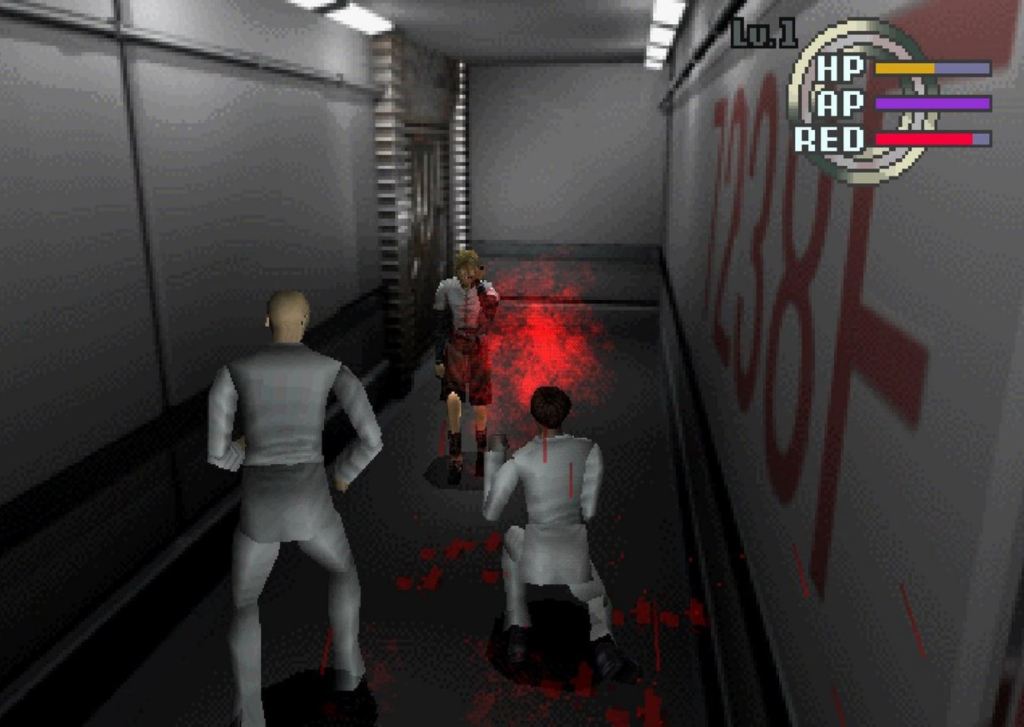
19. Galerians
There were quite a few great horror games in the late ‘90s/early 2000s that were written off as “Resident Evil knock-offs.” While it’s worth diving deeper into that particular subject another day, I feel like Galerians might be the PS1 horror game that really deserved to make a bigger impact than it actually did.
Built around its protagonist’s psychic abilities, Galerians brilliantly utilizes a multi-tier resource system that forces you to constantly manage your character’s well-being in order to get the most out of their psychic powers. Future survival games would certainly utilize similar concepts, but I don’t know if I’ve seen many other games that make you sympathize with your character via taking care of them quite as this one does. Galerians was actually thinking ahead at a time when many critics accused it of treading familiar genre ground.

18. R4: Ridge Racer Type 4
I debated whether or not to include this game. After all, R4 was a fairly successful and well-reviewed game at the time of its release. At first, my biggest justification for including it was the fact that it is a stunningly beautiful game that pushed the PS1 to its absolute limits in 1998. The lighting in this game alone puts it in the running for the absolute best-looking PS1 title ever.
However, the bigger reason that R4 belongs on this list is that it got the future of racing games right. At a time when games like Wipeout and Gran Turismo were pulling racing games to the polar extremes of “arcadey” and “realistic,” R4 argued for a compelling balance. R4 definitely leaned more into the arcade side of things, but it kept things between the lines just enough to remain appealing to racing enthusiasts. It just feels so modern.
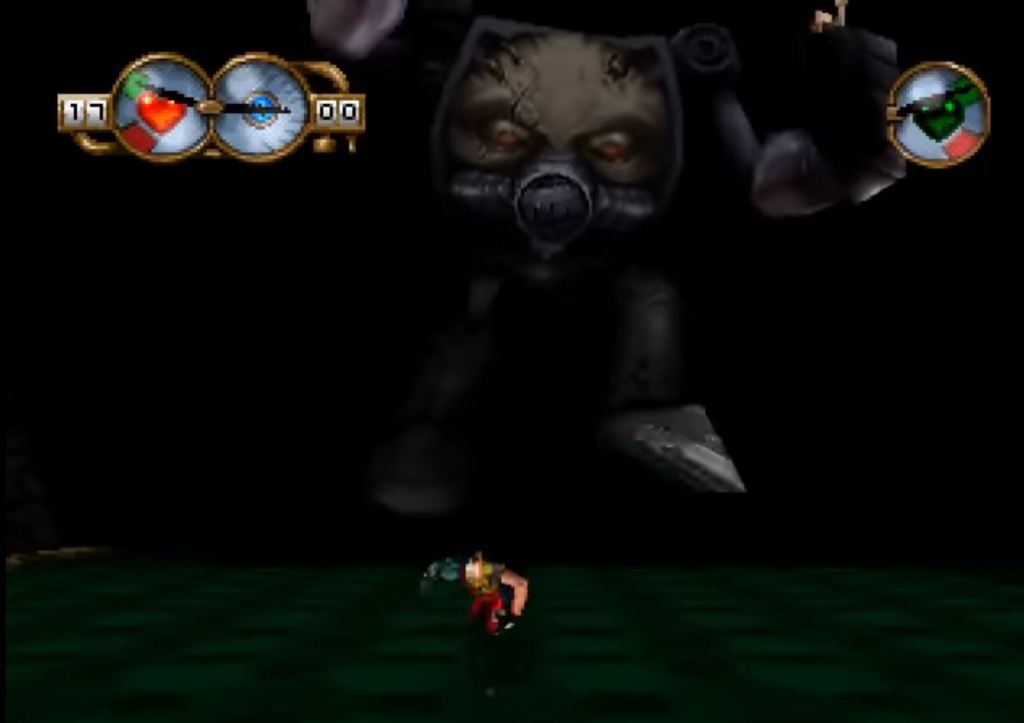
17. Wild 9
Wild 9 is one of those strange games that made me question what it means to be ahead of your time. After all, there doesn’t appear to be a lot to this game on the surface. If anything, this quirky 2.5D action title looks a little behind its time given the visual quality of 3D games available at the time. Its “Rig” mechanic, which allowed you to move items for combat and puzzle-solving purposes drew some praise, but a lot of critics just didn’t know what to make of this throwback with a few new ideas.
However, that’s oddly the thing that I think made Wild 9 ahead of its time. In 1998, Wild 9 was seen by many as a weird passion project that didn’t seem to make the most out of the PS1’s capabilities. These days, we appreciate developers that know how to make excellent 2D or 2.5D games built around modern technology and original ideas. Wild 9’s Rig weapon could also easily be considered a kind of precursor to Half-Life 2’s Gravity Gun.
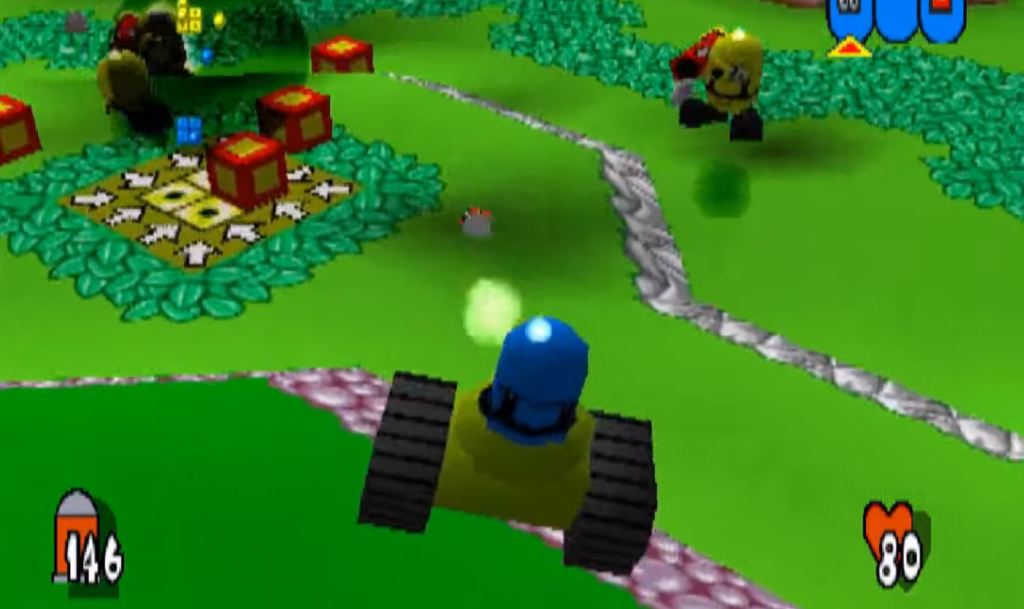
16. Team Buddies
It’s not hard to see why Team Buddies failed to make much of an impact when it was first released. Not only did it debut pretty late into the PS1’s lifespan (September 2000), but it’s kind of difficult to describe what Team Buddies even is. For the sake of this conversation, it’s best to think of it as a slightly more “shooter-like” take on Worms that also happens to feature a surprising amount of vulgarity (well…at least the original uncensored version of the game did).
I don’t remember who said it, but someone else put it best when they suggested that Team Buddies would have been an instant hit if it was released in the online multiplayer/Twitch era. Its humor, various modes, complex (yet accessible) gameplay, and even optional character skins all feel like something that we’d see in a hit modern multiplayer title. Honestly, someone really needs to remake this game today and enjoy the absurd amount of money that rolls in.
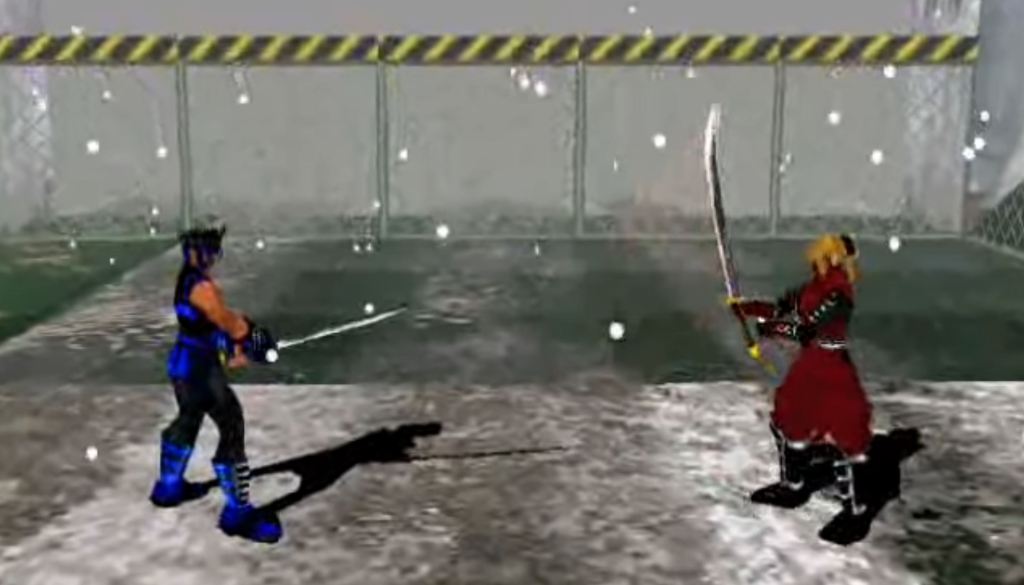
15. Bushido Blade
I’ve talked about my love of Bushido Blade before, and I probably won’t stop talking about this game until it finally gets a modern remake, remaster, or sequel. Even then, I’m not sure that a modern Bushido Blade game could fully capture the brilliance of this title’s kill shot “gimmick.”
I’ll never forget the first time that I saw a Bushido Blade player kill their opponent with a single, well-placed strike. It seems like such a simple concept, and it kind of is. However, Bushido Blade really stood out at a time when most fighting games let you pull off superhero-worthy moves on your opponents only to take away a small piece of their health bar. Bushido Blade could have been released 10 years after its 1997 debut and still would have felt ahead of its time.
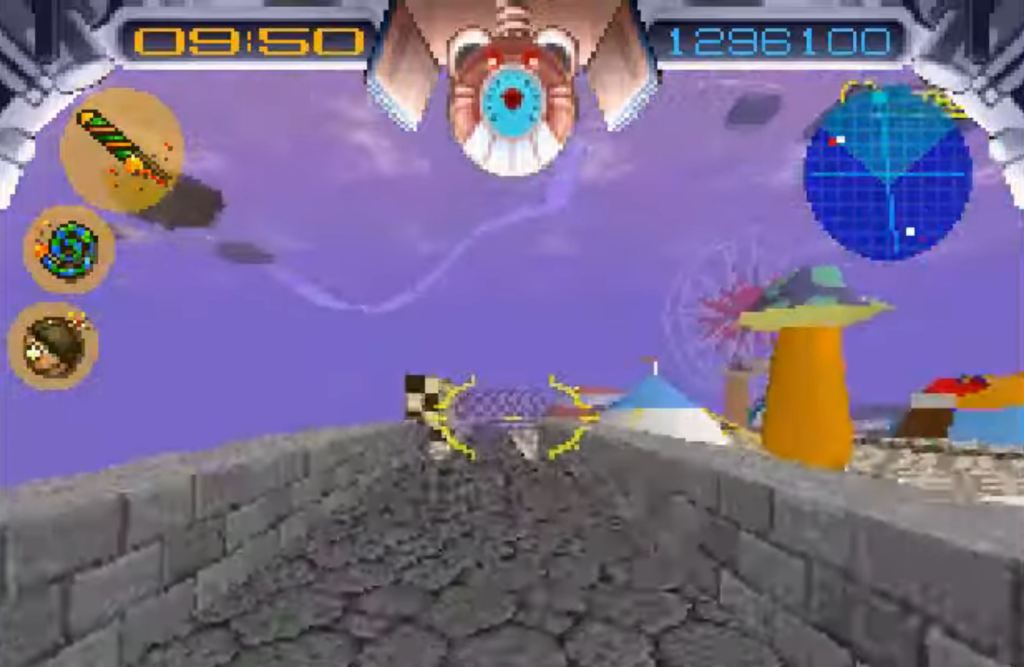
14. Jumping Flash!
It’s difficult to talk about Jumping Flash without mentioning that you really have to view this game through 1995 eyes. Otherwise, this first-person 3D platformer might strike you as one of the ugliest and most unplayable things that you’ve ever seen.
If Jumping Flash was a tech demo designed to showcase the PS1’s potential, it still would have been impressive. The fact that you could actually play this game in 1995 is nothing short of miraculous. Granted, its gameplay was incredibly rough around the edges, but this was the title that showed that the raw technical limitations that were preventing 3D platforming from becoming a thing were suddenly no longer the insurmountable obstacles they appeared to be.
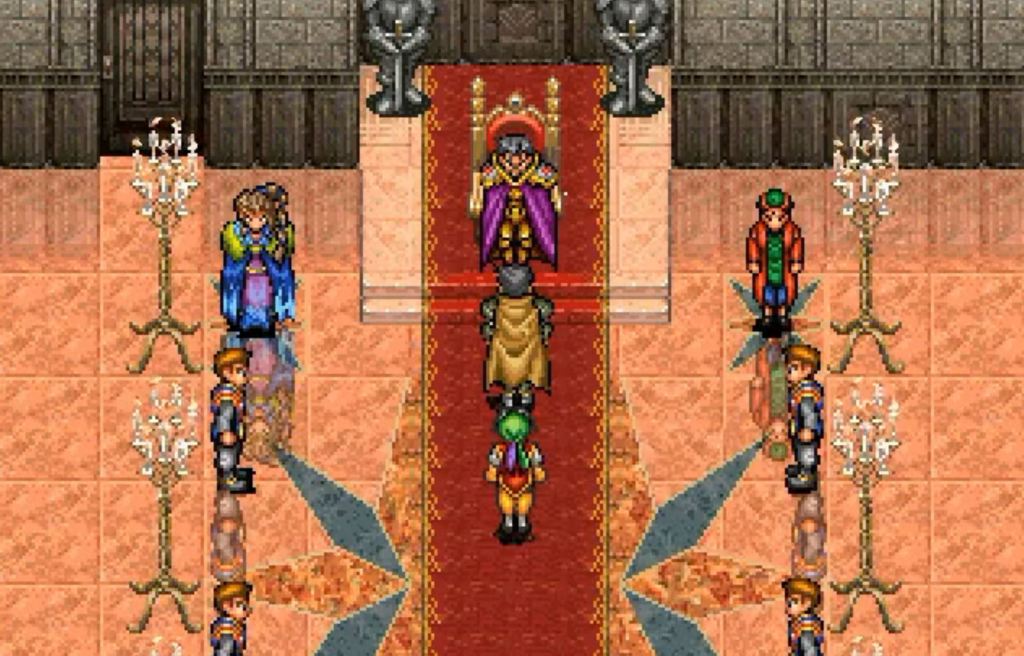
13. Suikoden
There are quite a few RPGs that could have made this list, and I honestly fear I’m not giving some of those games the respect they deserve by leaving them off this list. However, Suikoden has always stood out as a game that just should not have existed in 1995.
Yes, there were plenty of great RPGs on store shelves in 1995, but none of them featured Suikoden’s blend of complicated concepts. Suikoden’s cast of 107 recruitable characters rightfully steals the show, but I have to show some love for the game’s elaborate combat system, unique character attributes/equipment, and mature storytelling as well. Suikoden really did set the stage for so many of the things that would eventually define the best PS1 RPGs. Yet, there are few titles to this day that do even some of the things it did half as well.
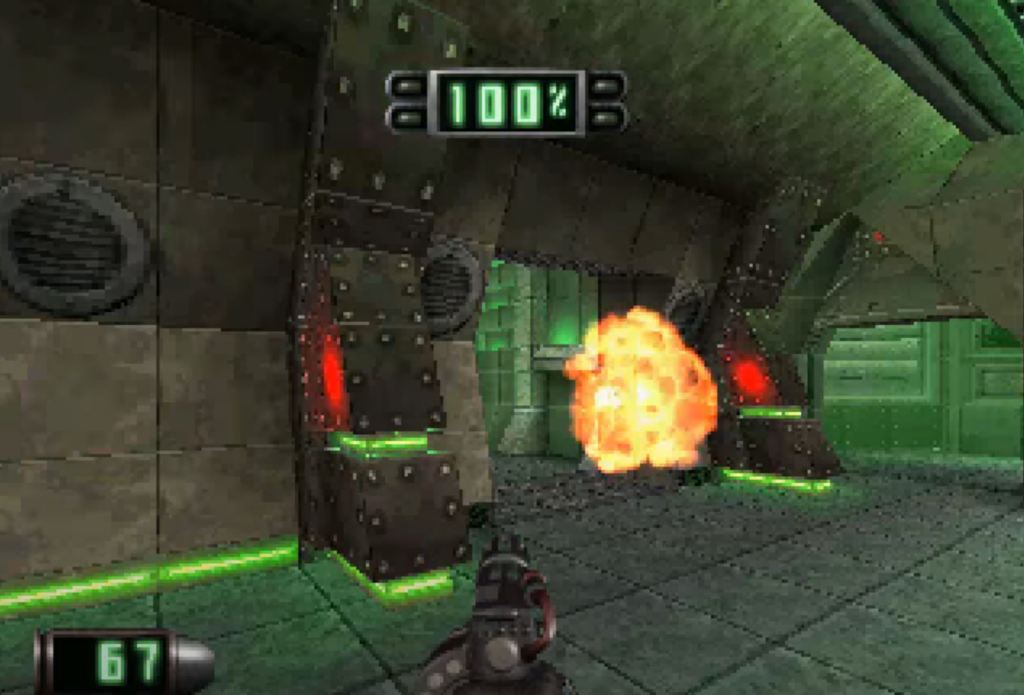
12. Disruptor
As a 3D FPS released for the PS1 in 1996, Disruptor was certainly ahead of its time from a purely technical perspective. What really makes this one special, though, are the many ways it tried to innovate the FPS scene despite some obvious technical and control limitations.
Disruptor was a narrative-driven sci-fi FPS highlighted by a clever “Psionics” system that essentially gave players RPG-like magical abilities. With due respect to the many great PC FPS games available at that time, it’s really stunning to play Disruptor now and realize how very modern it feels compared to some of the genre’s other incredible ’90s titles. Then again, this was famed developer Insomniac Games’ first project.
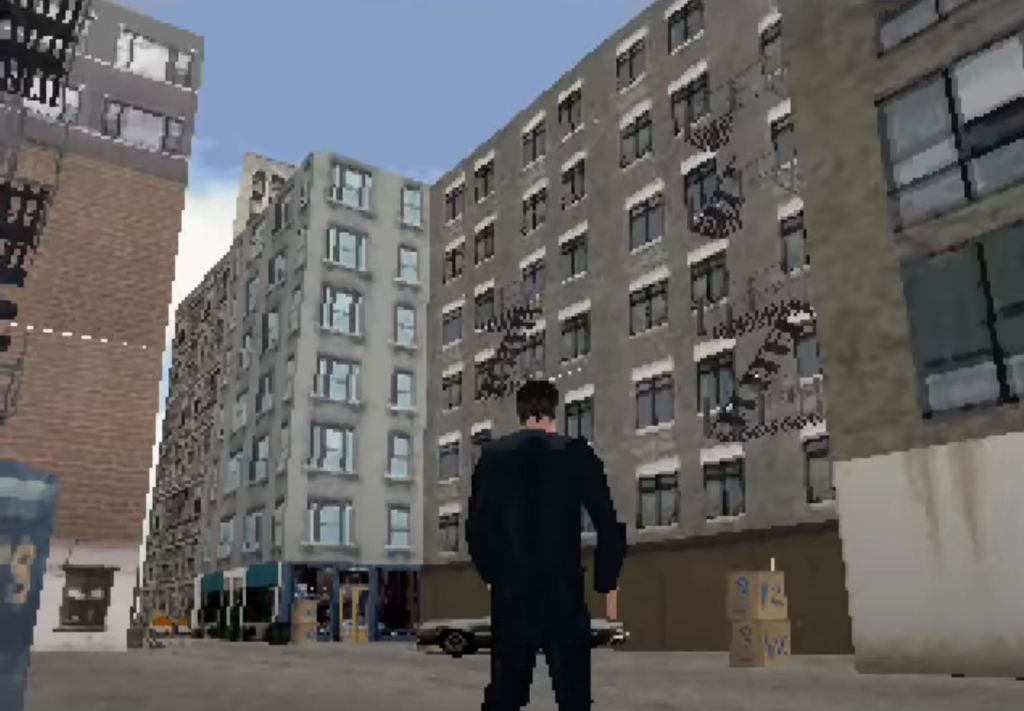
11. Driver 2
To be very honest with you, Driver 2 is not a very good game. At the very least, it fails to be as tight and entertaining as its predecessor. However, it’s hard to talk about the PS1’s most ambitious title and not mention the game that essentially tried to give PS1 owners their own version of GTA 3 a year before that game’s PS2 debut.
By allowing players to finally get out of their cars and explore open 3D environments on foot, developer Reflections Interactive gave many gamers their first taste of what soon become a blockbuster genre. While it’s sadly clear that the Driver 2 team wasn’t capable of really making that concept work with PS1 hardware, you have to admire their ambition.
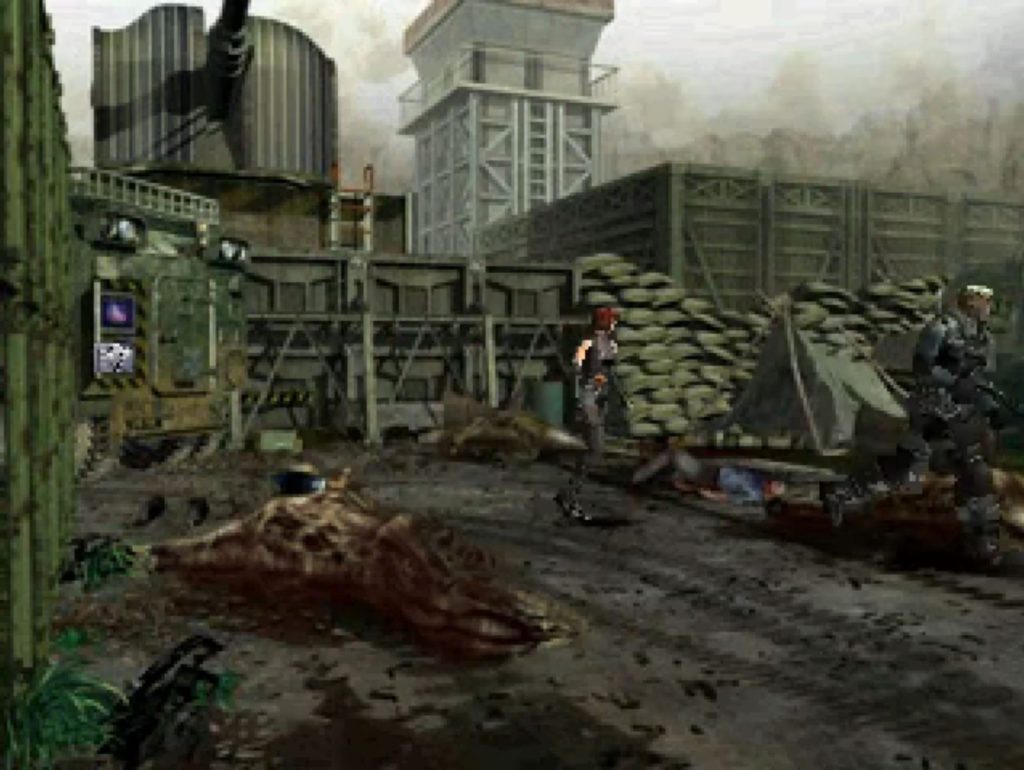
10. Dino Crisis 2
I often find myself looking for a reason to talk about Dino Crisis 2. Not only do I think it’s one of the greatest sequels ever made, but I think you could make the case that it’s one of the absolute best blends of action and horror in gaming history.
By shedding its Resident Evil-inspired roots and embracing a combo-based form of action gameplay (think Devil May Cry), Dino Crisis 2 showcased the full potential of this franchise and how it could distinguish itself from some considerable competition. While the game garnered glowing reviews and respectable sales, it’s kind of a forgotten curiosity these days. If this franchise ever does return, though, then it needs to return as an even better version of this genre-defying entry.
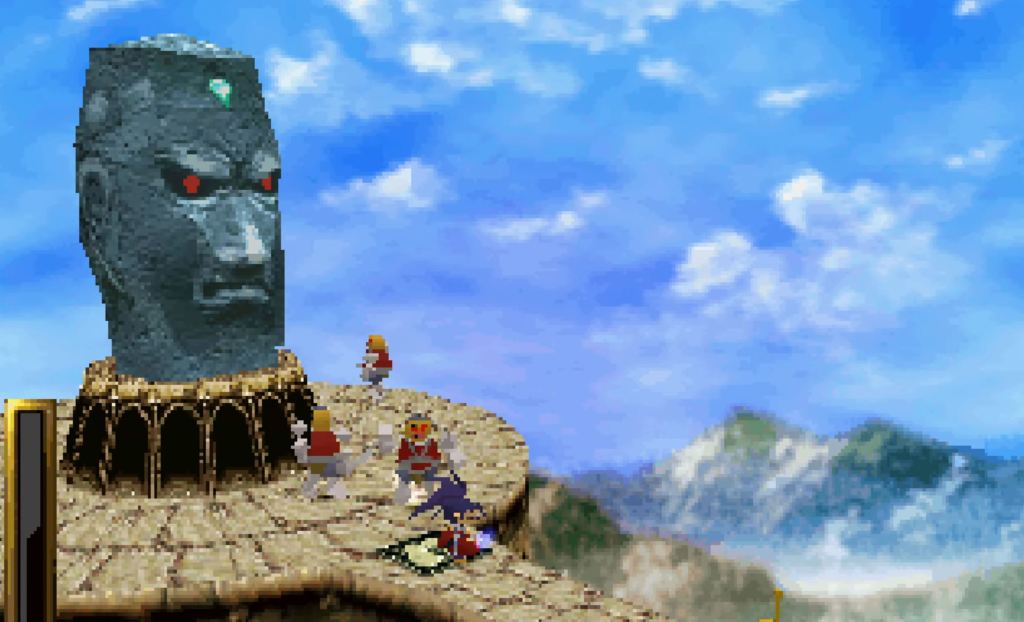
9. Brave Fencer Musashi
From a commercial perspective, it’s difficult to overstate the dangers of being different. For instance, developer Square should have been able to use Final Fantasy 7’s mainstream success (and their own incredible legacy) to sell people a different kind of RPG. Instead, they had a tough time getting global audiences to look past Brave Fencer Musashi’s strange name, cutesy graphics, and real-time ARPG gameplay.
That’s a shame, because Brace Fencer Musashi is easily one of the PS1’s most creative and enjoyable RPG experiences. While this game’s creative real-time combat is entertaining enough on its own, the unlikely star of this show may be the various sidequest and optional activities the game offers you. If it was released today, Brave Fencer Musashi would probably be embraced by a global audience much like the Yakuza and Persona series have been. In 1998, though, it was a surprisingly tough sell.
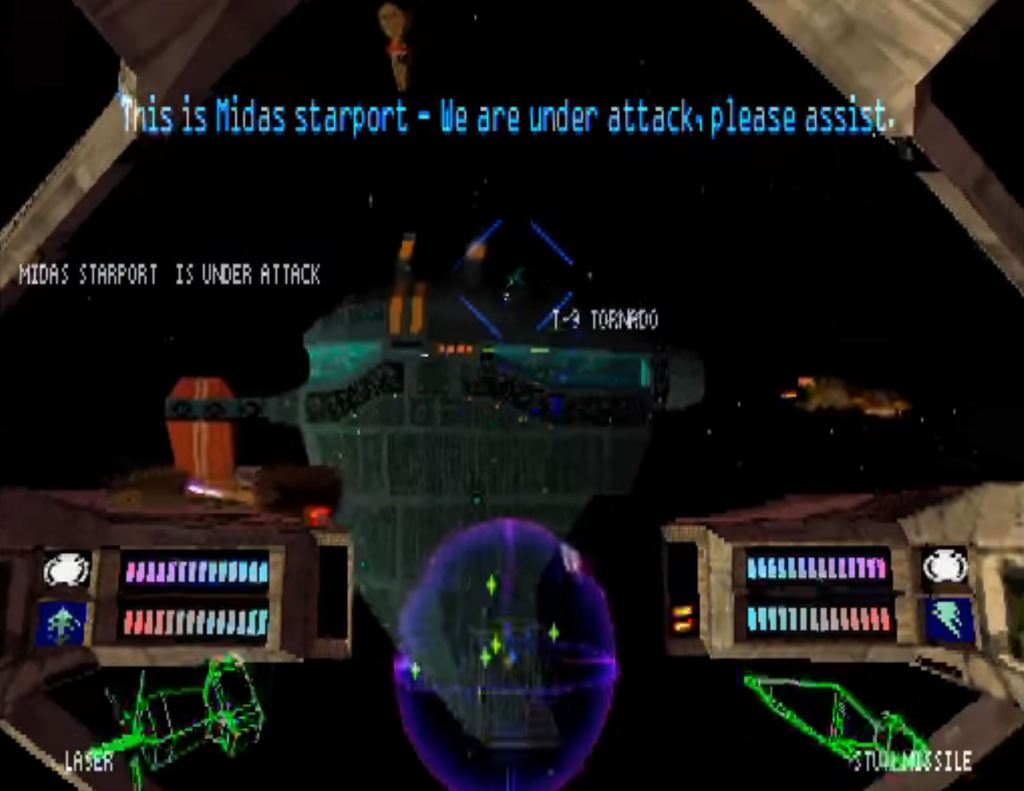
8. Colony Wars
At the time of Colony Wars’ debut in 1997, there were actually a few notable titles that tried to elevate the beloved space combat genre. While I’d argue that Colony Wars’ was one of the most technically and mechanically impressive of those titles, the game’s incredible mission/story structure easily earns it a spot on this list.
See, Colony Wars actually offered different campaign paths and outcomes based on choices you made throughout the game. While there were RPGs before Colony Wars that featured similar systems, that wasn’t the kind of advanced storytelling concept that players were expecting to find in a sci-fi action game. Besides, I’ll still argue that the ways this game adapted to your victories and losses are still more impressive than many modern examples of similar concepts.
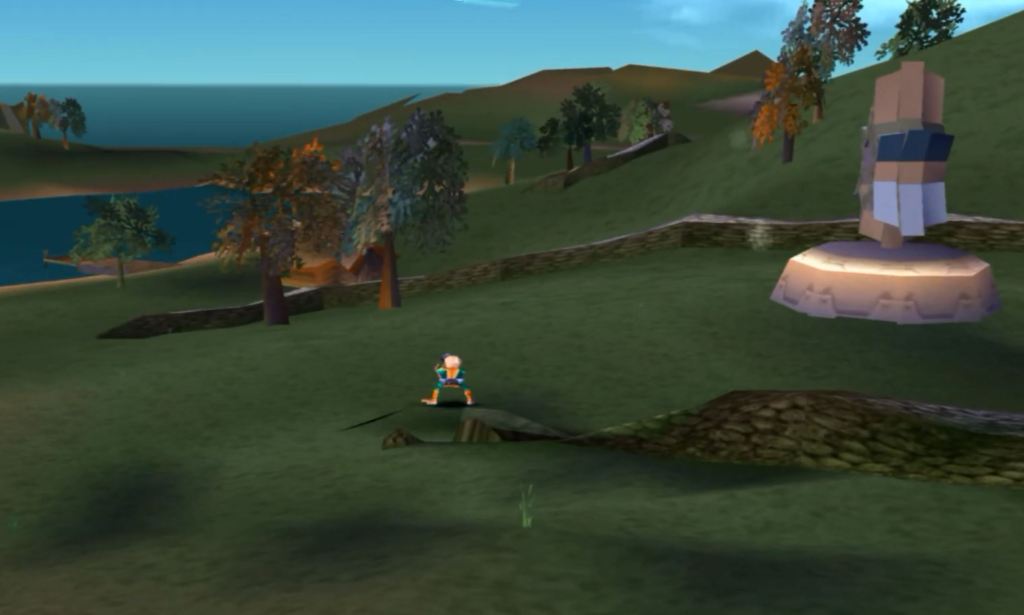
7. Terracon
Terracon is…odd. Gameplay-wise, it combines ideas from the collect-a-thon, shooter, and resource management strategy genres. Most of the game’s levels see you navigate fairly large spaces as you complete various objectives and gather the resources needed to activate missile defense systems. There’s really nothing quite like it so far as that goes, though you can certainly see elements of some modern hybrid strategy titles in its design.
The real reason Terracon is on this list, though, is that it is one of the most visually impressive PS1 games I can think of. While this game’s large levels and the freedom you’re afforded to navigate them are impressive enough, it’s really this title’s particle effects and smooth animations that blow me away to this day. How was a small development studio called Picture House able to get so much out of the PS1’s aging hardware? It’s a shame this game never got a global release.
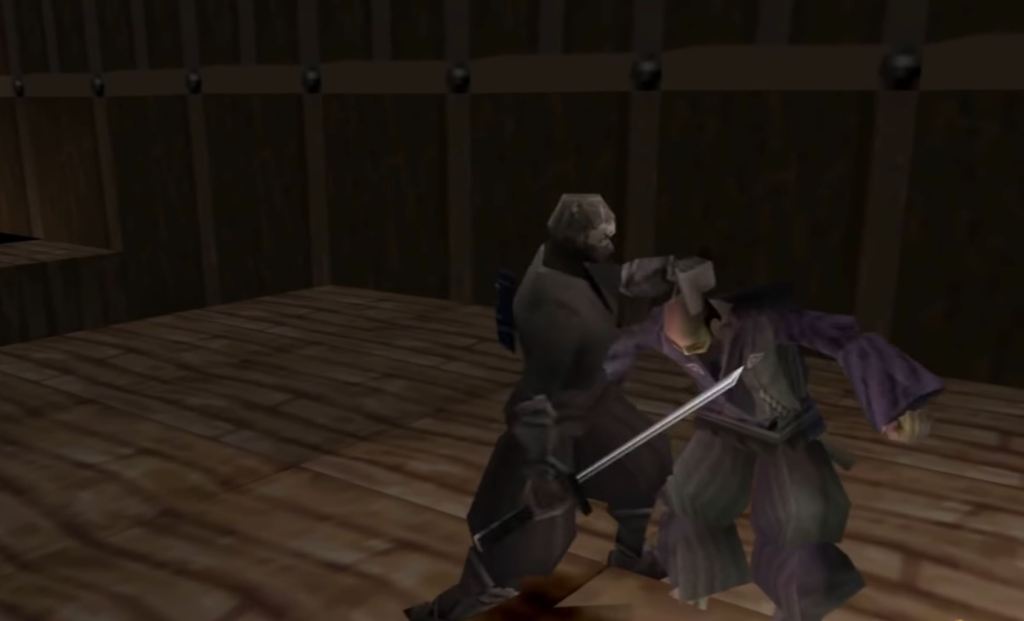
6. Tenchu: Stealth Assassins
There were stealth games before Tenchu: Stealth Assassins, and there were ninja games before Tenchu: Stealth Assassins. Strangely, though, there were few ninja games before Tenchu: Stealth Assassins that were truly built around the stealth tactics utilized by actual ninjas. Anecdotally, I can tell you that I knew quite a few people who tried playing this game and gave up the moment they realized they couldn’t run around and slice up waves of enemies.
Years later, though, Tenchu’s brilliance feels more impactful than ever. The teams behind games such as Nioh, Sekiro, and Ghost of Tsushima have cited Tenchu as an influence, while the slow fall of the stealth genre has only enhanced the reputation of the best games from that genre’s glory days. Tenchu actually sold pretty well in its day, but I feel like there’s a degree to which the game’s immediate impact was hindered by the fact it was released in the US just a few days before Metal Gear Solid.
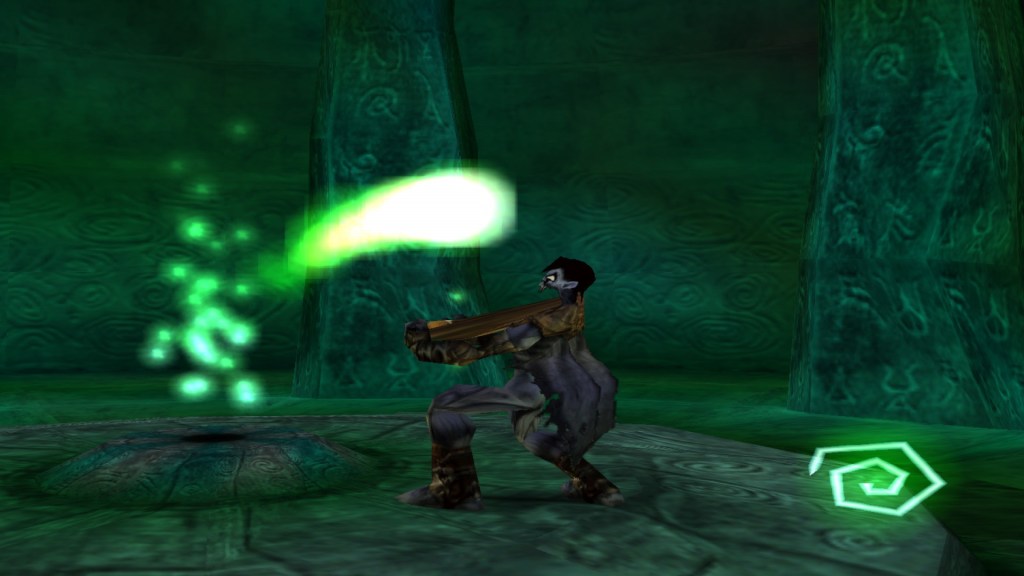
5. Legacy of Kain: Soul Reaver
I recently had the chance to talk about this game during my look at forgotten video game franchises, but it’s never a bad time to praise one of the most beautiful, advanced, and innovative 3D adventures on the PS1.
From a technical standpoint, Soul Reaver most certainly deserves a spot on this list. It might just be the best-looking PS1 game ever, and I’d argue that it even holds its own against early Dreamcast and PS2 titles as well. The game’s innovative sound design also ushered in a new era of dynamic scores that didn’t take up more memory than was absolutely necessary. On top of all that, Soul Reaver’s mythology-heavy storytelling showed that action-adventure games were capable of delivering the kinds of epic stories typically reserved for RPGs. It was just a stunning all-around achievement.
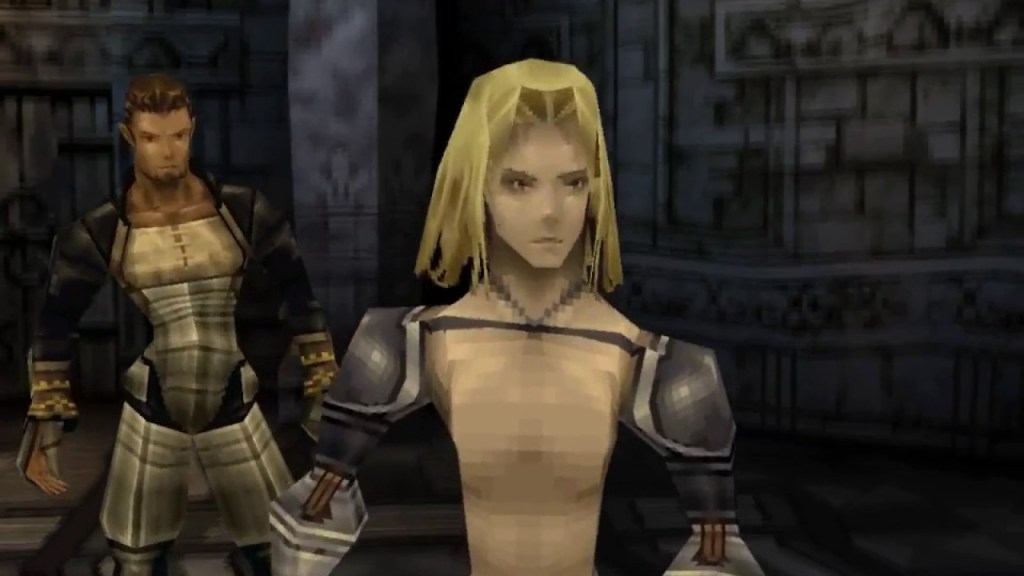
4. Vagrant Story
Catch me on the right day, and I might try to argue that Vagrant Story is the best PS1 game ever made. Today, though, I’m much more interested in talking to you about the many ways that this game was so very far ahead of its time.
Visually, Vagrant Story showed that the PS1 still had a lot left in the tank during its “dying days.” The level of detail that went into every inch of this game’s visual design set a standard that most other studios couldn’t have possibly hoped to match. From a gameplay perspective…well, I hate to use this comparison, but there really is a Dark Souls-like quality to Vagrant Story’s reimagined RPG concepts, equipment/weapon mechanics, and approach to difficulty. Even then, I’m not sure there’s ever been another game that made strategic combat feel this fluid. While Vagrant Story was certainly a critic’s darling in its day, the game’s complexity, slow pacing, and late release date doomed it to be relegated to retrospectives.
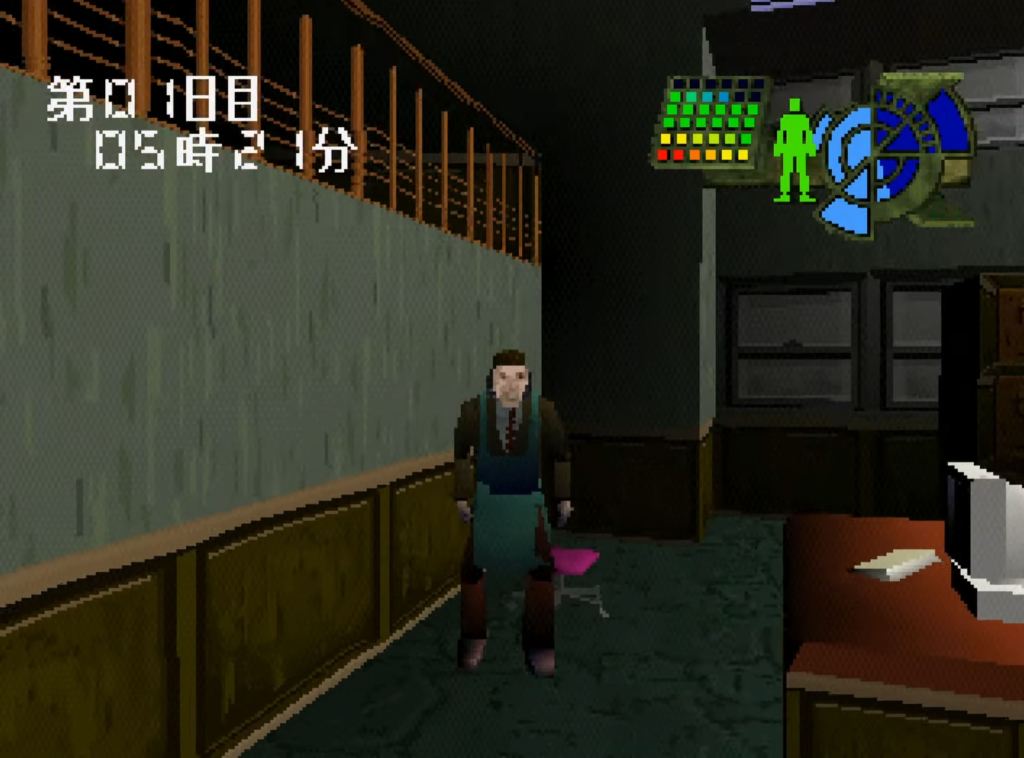
3. Germs: Nerawareta Machi
I had the pleasure of talking about this game during my look at the weirdest PS1 games ever, but I don’t want anyone thinking that Germs was just some bizarre curiosity. No, this game really was ahead of its time in just about every way I can think of.
At the very least, Germs is an open-world game released for the PS1 in 1999. Honestly, though, it may be better to think of Germs as the PS1’s version of Shenmue. It was a body horror mystery title that shunned so many forms of traditional gameplay in favor of the thrill of navigating a video game world that felt truly borderless. It was weird, it was rough, and…well, it wasn’t even all that great. However, games like this show what the PS1 was truly capable of.
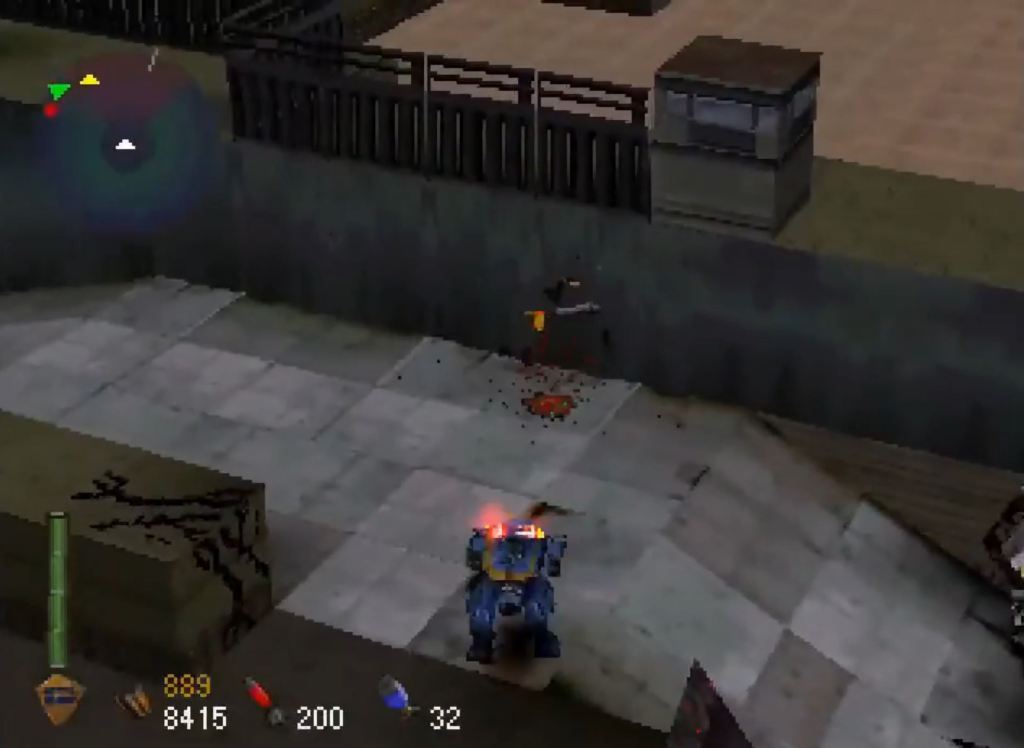
2. Future Cop: LAPD
If the PS1 had one genre Achilles heel it would have to be third-person action titles. There were good third-person action games on the PS1 (I’ve already mentioned some of them), but you have to remember that developers at that time were still trying to figure out how even basic genre concepts (most notably camera controls) were going to work. While Future Cop: LAPD is certainly better than a lot of its competition at the time, this game has never needed any help when it comes to impressing anyone who plays it or lays eyes on it.
Future Cop: LAPD’s campaign offered simply satisfying mech-based action gameplay that even supported co-op action. It was a blast. However, it’s Future Cop: LAPD’s Precinct Assault Mode that really earns it a spot on this list. Often considered a precursor to what would eventually become the MOBA genre, Precinct Assault‘s base capturing mechanics showed that even more action-heavy games could benefit from incorporating strategy concepts. This game arguably shouldn’t have existed in 1998, and it certainly shouldn’t have been this good.
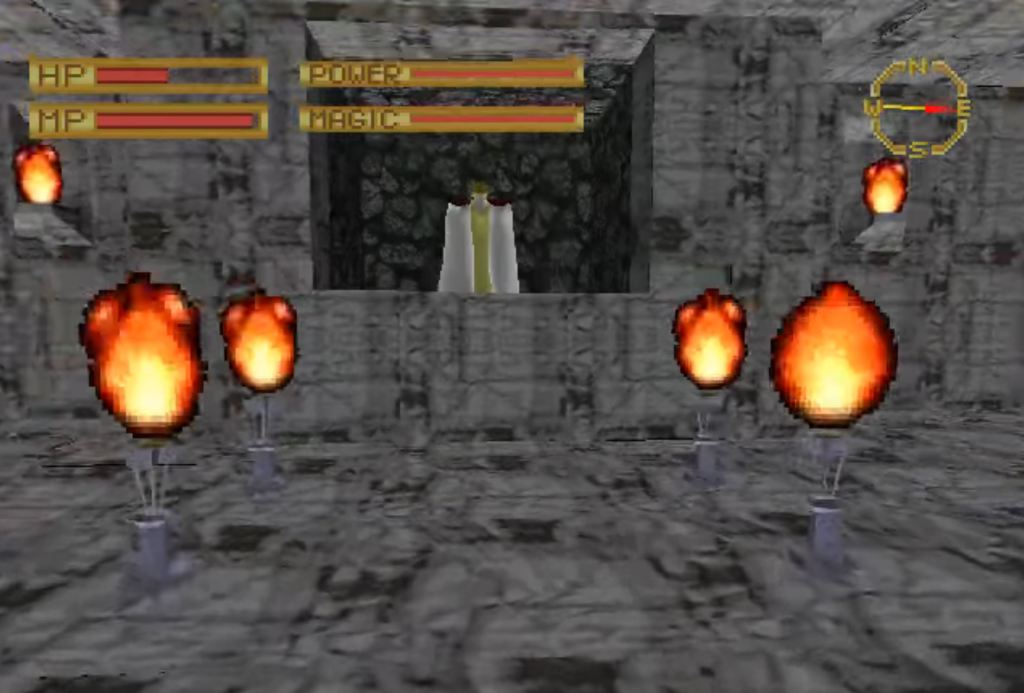
1. King’s Field
I’ll never get over the fact that King’s Field was released in 1994. Actually, it was just a few weeks away from being one of the PS1’s Japanese launch games. At a time when nearly every other developer was wondering what the earliest days of gaming’s next generation were going to look like, King’s Field developer FromSoftware was laying the groundwork for what the modern era of gaming would look like.
For those that don’t know, King’s Field is the spiritual successor to Demon’s Souls and Dark Souls. While this first-person dungeon crawler is obviously quite a bit different from those games in a lot of ways, the similarities are far more significant than the differences. From character builds that rely more on gear and situations rather than raw stats to levels filled with chilling atmospheric storytelling and deadly traps, King’s Field is filled with ideas that we’re just now starting to fully appreciate. And yes, it’s also incredibly difficult.
I find King’s Field to be the most noteworthy testament to the creative experimentation that was happening throughout the PS1 era. It reminds us that the true reward of more powerful gaming hardware isn’t better graphics but rather the permission to dream.
